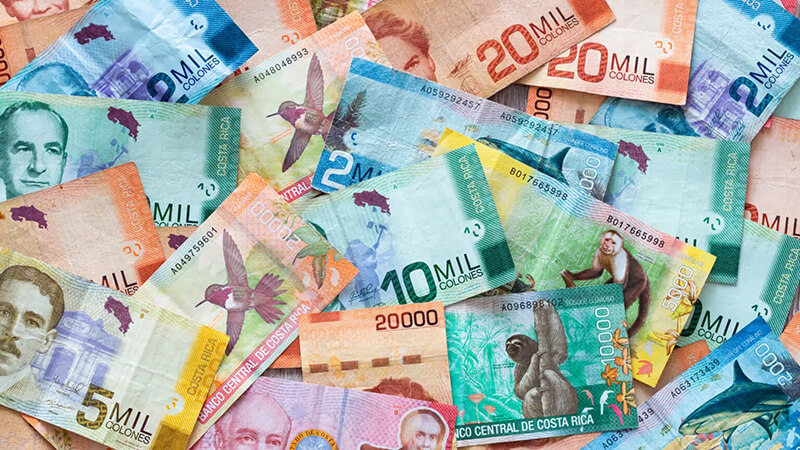Costa Rica Uses the Colon
Introduction to Costa Rican Currency
Costa Rica, a gem in Central America known for its stunning landscapes, diverse wildlife, and rich culture, has its own unique currency: the Costa Rican colon (CRC). Named after Christopher Columbus, known as Cristóbal Colón in Spanish, the colon plays a crucial role in the country’s economic and daily activities.
History of the Costa Rican Colon
The Costa Rican colon has a rich history dating back to its introduction in 1896, replacing the peso. Initially pegged to the French franc, the colon has undergone various changes, reflecting the nation’s economic shifts and development.
Design and Features of the Costa Rican Colon
Banknotes: Design, Features, and Security
Costa Rican banknotes are vibrant and colorful, showcasing the country’s natural beauty and cultural heritage. Each denomination features notable national figures, flora, fauna, and landmarks. Advanced security features such as watermarks, security threads, and holograms are integrated to prevent counterfeiting.
Coins: Design and Common Denominations
Coins in Costa Rica come in various denominations, commonly used are 5, 10, 25, 50, 100, and 500 colones. They are designed with simplicity, often depicting national symbols and historical references.


The Role of the Central Bank of Costa Rica
The Central Bank of Costa Rica (BCCR) is responsible for issuing and regulating the colon. It ensures monetary stability, manages inflation, and oversees the financial system, maintaining confidence in the national currency.
Exchange Rates and International Trade
The colon’s value fluctuates based on economic conditions and foreign exchange markets. Its exchange rate against major currencies like the US dollar significantly impacts Costa Rica’s international trade, influencing import and export prices.
Economic Impact of the Colon on Costa Rica
The colon directly affects Costa Rica’s economy, influencing inflation rates, purchasing power, and economic stability. A stable colon helps maintain consumer confidence and supports economic growth.
Tourism and the Costa Rican Colon
Tourism is a vital part of Costa Rica’s economy, and understanding the local currency is crucial for visitors. Tourists can easily exchange their money at banks and exchange houses. Credit cards are widely accepted, but having some colones on hand is advisable for small transactions.
Comparing the Colon with Other Currencies
Comparison with the US Dollar
In tourist-heavy areas, US dollars are often accepted, but it’s generally better to use colones for better rates. The colon’s value compared to the dollar affects purchasing power for both locals and tourists.
Comparison with Other Latin American Currencies
Compared to other Latin American currencies, the colon has maintained relative stability, although it faces challenges like inflation and devaluation similar to its regional counterparts.
Digital Payments and the Future of the Colon
Costa Rica is gradually adopting digital payment methods. Mobile banking and electronic transactions are becoming more common, suggesting a shift towards a more cashless society in the future.
Challenges Facing the Costa Rican Colon
Inflation and Devaluation Concerns
Like many currencies, the colon is susceptible to inflation and devaluation, which can erode purchasing power and economic stability. The Central Bank’s policies aim to mitigate these risks.
Counterfeiting and Security Issues
Counterfeiting remains a concern, prompting continuous updates in security features of banknotes. Public awareness and sophisticated anti-counterfeiting measures are essential.
The Cultural Significance of the Colon
The colon is more than just currency; it’s a symbol of national pride. Its design elements reflect Costa Rica’s rich heritage, and it plays a role in cultural expressions, art, and media.
Banking and Financial Services in Costa Rica
Costa Rica boasts a well-developed banking sector, offering a range of services to locals and expatriates. From savings accounts to loans and digital banking, financial services are accessible and reliable.
Government Policies and the Colon
Government policies significantly impact the colon. Fiscal and monetary policies are designed to stabilize the currency, control inflation, and promote economic growth.
The Colon in Everyday Life
For Costa Ricans, the colon is a part of daily life, used in all transactions from grocery shopping to paying bills. Understanding its value and managing it effectively is crucial for budgeting and financial planning.
Conclusion
The Costa Rican colon is a vital component of the country’s identity and economy. As Costa Rica continues to grow and modernize, the colon remains a stable and significant symbol of its rich heritage and bright future.


